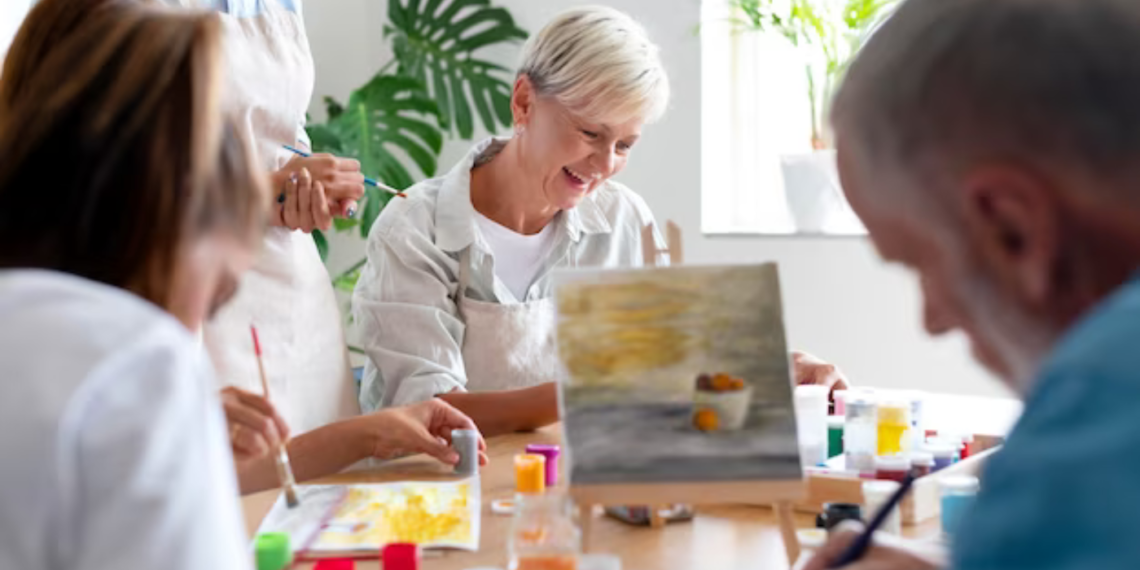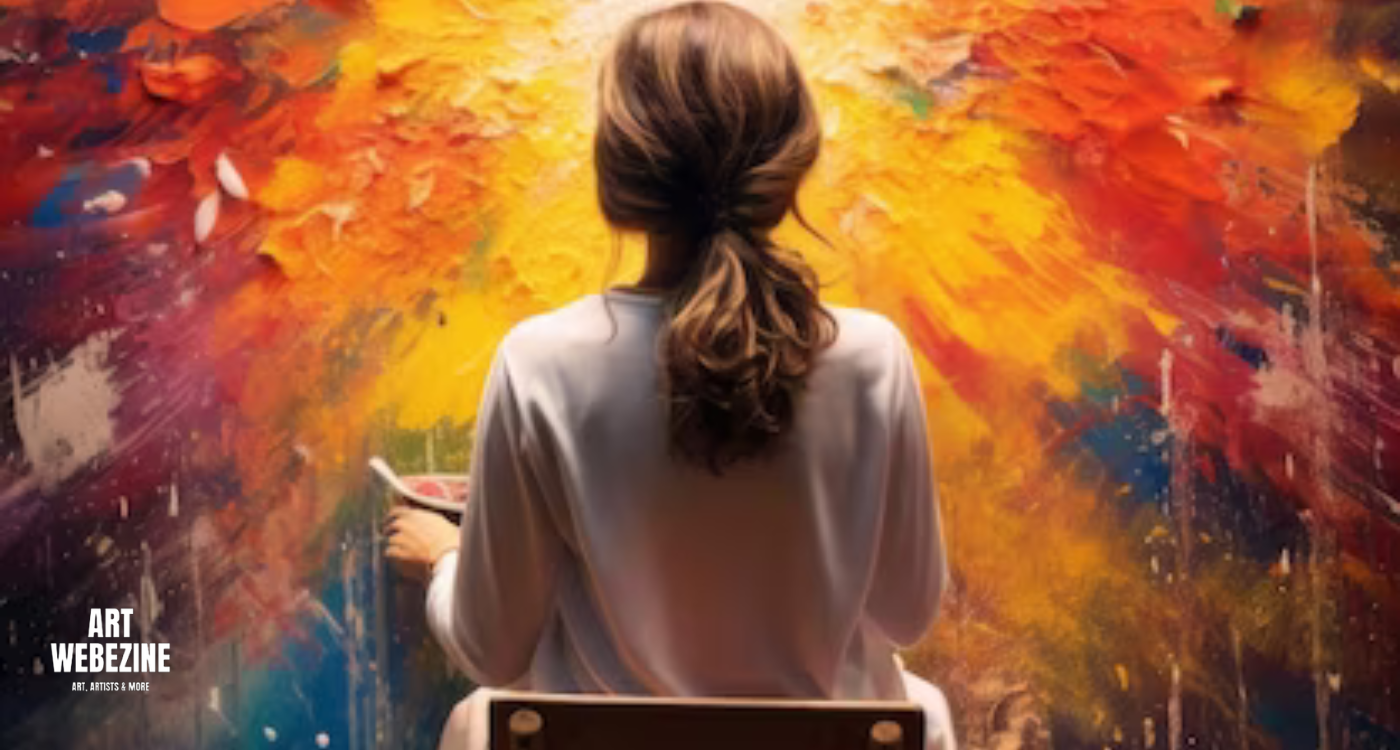Art therapy has developed a powerful and transformative approach in mental health treatment. Art therapy gives unique ways for different people to explore their emotion, encourage healing and also develop self awareness. As understanding of effectiveness grows, art therapy is increasingly being utilized in diverse settings to address a wide range of mental health challenges.
Art Therapy: A Unique Approach to Mental Health
Art therapy is a form of psychotherapy that utilizes the creative process of art-making to improve emotional healing and mental well-being. It is based on the belief that our internal world, including our thoughts, emotions, and experiences, can be expressed and explored through non-verbal means, such as painting, drawing, sculpting, and other artistic forms.
The core principles of art therapy revolve around the idea that art-making provides a safe and supportive space for individuals to express themselves without the constraints of language. In this therapeutic environment, individuals can explore their inner world, gain insights into their emotions, and develop new coping strategies.
Art therapy offers a unique approach to mental health, addressing a wide range of emotional and psychological challenges, including:
Anxiety and Depression: Art therapy provides a safe and non-threatening space for individuals to express and explore their anxieties and depressive thoughts, leading to a better understanding of their emotions and the development of healthier coping strategies.
Trauma and PTSD: Art therapy can be a powerful tool for processing and healing from traumatic experiences. Through art-making, individuals can symbolically re-experience and reframe traumatic events, leading to a reduction in symptoms and improved emotional regulation.
Relationship and Social Issues: Art therapy can help individuals explore and understand their relationships with others, fostering self-awareness, empathy, and improved communication skills.
Self-Esteem and Self-Acceptance: Art therapy can enhance self-esteem and self-acceptance by providing opportunities for individuals to express their authentic selves, validate their emotions, and appreciate their unique creative abilities.
Mental Health Benefits: A Spectrum of Healing
Art therapy has emerged as a valuable tool in addressing a wide range of mental health concerns, including:
Stress Reduction and Relaxation: The act of creating art can be deeply calming and restorative, providing a release from stress and anxiety. Engaging in art therapy can help individuals lower their heart rate, reduce muscle tension, and promote a sense of tranquility.
Enhanced Emotional Expression and Regulation: Art provides a safe and non-verbal outlet for expressing emotions that may be difficult or overwhelming to articulate in words. Through art, individuals can explore their feelings of anger, sadness, fear, or joy, gaining a deeper understanding of their emotional landscape and developing healthier coping mechanisms.
Increased Self-Awareness and Understanding: The creative process inherent in art therapy fosters self-discovery and personal growth. As individuals engage in various art forms, they gain insights into their strengths, weaknesses, and unique perspectives, leading to a more comprehensive understanding of their self-identity.
Improved Coping Skills and Resilience: Art therapy equips individuals with valuable coping skills to navigate life’s challenges. By learning to express and process their emotions through art, individuals develop greater resilience in the face of stress, anxiety, and trauma.
Reduced Symptoms of Anxiety, Depression, and Trauma: Research has demonstrated the effectiveness of art therapy in alleviating symptoms of anxiety, depression, and post-traumatic stress disorder (PTSD). Art therapy can help individuals confront painful memories, process trauma, and develop strategies for managing their symptoms.
The healing power of art therapy lies in its ability to tap into the subconscious mind, allowing individuals to express and process emotions that may be difficult to articulate verbally. Art-making provides a safe and non-judgmental space for exploration, self-discovery, and emotional release, leading to a deeper understanding of oneself and one’s emotions.
Art Therapy: A Journey of Healing and Transformation

The profound healing power of art lies in its ability to transcend language and connect with the subconscious mind. By engaging with art, individuals can access hidden emotions, unresolved conflicts, and untapped potential. The creative process becomes a journey of self-discovery, allowing individuals to explore their inner landscape, gain valuable insights, and foster personal growth.
Through art, individuals can connect with their authentic selves, shedding layers of self-doubt and embracing their unique perspectives. Art provides a safe space for exploration, experimentation, and self-expression, empowering individuals to break free from limiting beliefs and embrace their creativity.
Art therapy offers a unique and transformative journey of healing and personal growth. Through art-making, individuals can:
Gain Self-Awareness: Art therapy provides a platform for self-discovery, allowing individuals to explore their inner thoughts, feelings, and experiences, leading to a greater understanding of their own unique emotional landscape.
Develop Coping Mechanisms: Art therapy equips individuals with healthier coping mechanisms for managing difficult emotions and addressing mental health challenges. Creative expression can serve as a constructive outlet for stress, anxiety, and trauma.
Enhance Communication Skills: Art therapy fosters nonverbal communication and emotional expression, enabling individuals to communicate and connect with others on a deeper level.
Promote Personal Growth: Art therapy facilitates personal growth and development by encouraging self-reflection, creativity, and a willingness to embrace vulnerability.
Real-Life Applications: Art Therapy in Action
The therapeutic power of art therapy extends to a wide range of settings, demonstrating its versatility and effectiveness in addressing diverse mental health challenges. Let’s explore a few real-life examples of how art therapy is utilized in various contexts:
Hospitals: In hospital settings, art therapy plays a significant role in supporting children and adults facing chronic illnesses, injuries, or terminal diagnoses. Through art, individuals can express their fears, anxieties, and hopes, fostering emotional resilience and promoting a sense of control amidst challenging circumstances.
Mental Health Clinics: Art therapy is a common treatment modality in mental health clinics, serving individuals struggling with anxiety, depression, trauma, and other mental health conditions. By providing a safe and supportive environment for creative expression, art therapy helps individuals process difficult emotions, develop coping strategies, and enhance self-esteem.
Community Centers: Community centers often utilize art therapy as a means of promoting mental health awareness, providing support groups, and facilitating healing for individuals from diverse backgrounds. Art therapy can be particularly beneficial for marginalized communities who may face additional barriers to accessing traditional forms of mental health treatment.
Case Studies: Unveiling the Impact of Art Therapy
The impact of art therapy on individuals facing mental health challenges is profound and multifaceted. Let’s delve into two case studies that exemplify the transformative power of art in healing and personal growth.
Case Study 1: Overcoming Trauma through Creative Expression
Sarah, a young woman struggling with the emotional aftermath of a traumatic experience, found solace and empowerment through art therapy. Guided by an experienced art therapist, Sarah began to express her pent-up emotions through painting, drawing, and sculpting. Her artwork, initially filled with dark and somber tones, gradually transformed, reflecting a growing sense of hope and resilience. As Sarah delved deeper into her creative process, she gained a deeper understanding of her trauma, developed healthier coping mechanisms, and reclaimed a sense of self-worth.
Case Study 2: Navigating Anxiety with Art Therapy
David, a high-achieving student grappling with anxiety and self-doubt, discovered a new path to self-discovery and emotional regulation through art therapy. In the art therapy room, David found a safe haven where he could express his anxieties and insecurities without fear of judgment. Through painting, sculpting, and journaling, he explored the roots of his anxiety, developed strategies for managing his emotions, and cultivated a sense of self-acceptance. Art therapy became a therapeutic tool that empowered David to navigate the challenges of anxiety and build a more resilient and confident self.
Conclusion
Art therapy emerges as a light of hope for individuals seeking to navigate the complexities of mental health and emotional well-being. By providing a safe and supportive space for creative expression, art therapy empowers individuals to heal, grow, and discover the transformative power of art in their lives.
Art therapy is a particularly effective form of therapy that uses art as a means of self-expression and emotional healing, and can be particularly beneficial for individuals who have experienced trauma or other difficult experiences. Moreover, the impact of art on the brain is also being studied, with research showing that engaging in creative activities can improve cognitive function and promote neural plasticity.





